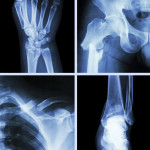 |
Gateway Apothecary
Saint Louis, MO
In many U.S. cities, the average age of a patient with HIV is 50 years old. The advancing age of HIV patients means osteoporosis will continue growing as a problem in the future.
The drug that causes the most issues is tenofovir, which is found in Viread, Truvada, Atripla, Complera and Stribild. This medication is the backbone of a large percentage of most HIV regimens, so providers need to stay vigilant to help prevent bone loss in patients who are at risk for osteoporosis.
There are some non-medicated ways to try to prevent osteoporosis. Weight-bearing exercises can make bones stronger and slow down the rate of bone loss. Smoking cigarettes can cause bone loss, so stopping helps. There are many foods that contain calcium and vitamin D that can help slow down bone loss, including milk, cheeses and yogurt. People need to take calcium containing vitamin D since vitamin D helps with the absorption of the calcium.
Certain antiretrovirals need to be taken separately from calcium tablets, Tivicay (dolutegravir) should be taken two hours before or six hours after calcium and Stribild should be separated by two hours. Other medications that patients with HIV take can interact with calcium pills, so you should check with your pharmacist or physician to make sure that there are no issues taking the calcium tablets.
Gilead, the maker of tenofovir, is currently studying another form of tenofovir at a lower dose, which should prevent some of the bone loss issues. This medication is currently being studied in a Phase III study and it looks to be a promising compound.
Additional writing by Amanda Wong, student pharmacist at the St. Louis College of Pharmacy.







2 Comments
2 Comments